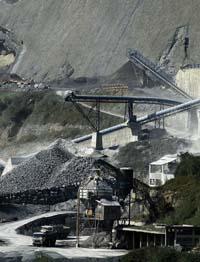Concrete as an example of nanomaterials

After a thorough analysis of the concrete structure, researchers at MIT, Massachusetts Institute of Technology, have concluded that it is a good example of nanomaterials. It seems that its nanoscale structure is responsible for this type of characteristics.
On this scale, it has been proven that the different types of cement used in the manufacture of concrete contain numerous particles of calcium silica hydrate of 4-5 nanometers, some randomly placed and other oranges ordered as in shelves. The combination of both is directly related to the hardness and durability of the material.
In addition, researchers believe that the same study will serve to improve the concrete manufacturing process. This is because around 5.5 billion tons a year are generated, which is an important environmental impact. In fact, the energy used in the process generates 5-10% of global carbon dioxide emissions. But from this study, the way to reduce carbon dioxide generation is expected to be invented.





